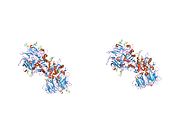
Membrane alanyl aminopeptidase also known as alanyl aminopeptidase (AAP) or aminopeptidase N (AP-N) is an enzyme that in humans is encoded by the ANPEP gene.

Cathepsin C (CTSC) also known as dipeptidyl peptidase I (DPP-I) is a lysosomal exo-cysteine protease belonging to the peptidase C1 protein family, a subgroup of the cysteine cathepsins. In humans, it is encoded by the CTSC gene.
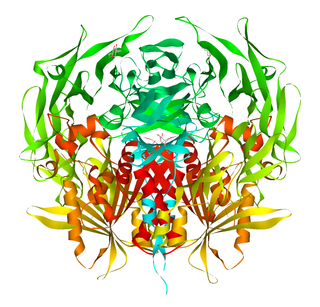
Dipeptidyl peptidase-4 (DPP4), also known as adenosine deaminase complexing protein 2 or CD26 is a protein that, in humans, is encoded by the DPP4 gene. DPP4 is related to FAP, DPP8, and DPP9. The enzyme was discovered in 1966 by Hopsu-Havu and Glenner, and as a result of various studies on chemism, was called dipeptidyl peptidase IV [DP IV].

Kallikrein-10 is a protein that in humans is encoded by the KLK10 gene.

Fibroblast activation protein alpha (FAP-alpha) also known as prolyl endopeptidase FAP is an enzyme that in humans is encoded by the FAP gene.

Dipeptidyl-peptidase 3 is an enzyme that in humans is encoded by the DPP3 gene.
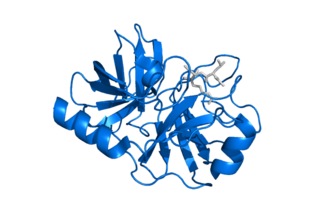
Kallikrein-5, formerly known as stratum corneum tryptic enzyme (SCTE), is a serine protease expressed in the epidermis. In humans it is encoded by the KLK5 gene. This gene is one of the fifteen kallikrein subfamily members located in a cluster on chromosome 19. Its expression is up-regulated by estrogens and progestins. Alternative splicing results in multiple transcript variants encoding the same protein.
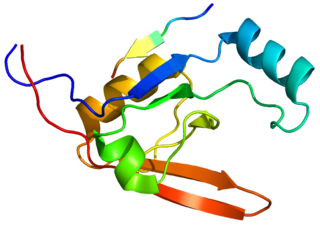
Serine protease HTRA1 is an enzyme that in humans is encoded by the HTRA1 gene. The HTRA1 protein is composed of four distinct protein domains. They are from amino-terminus to carboxyl-terminus an Insulin-like growth factor binding domain, a kazal domain, a trypsin-like peptidase domain and a PDZ domain.

Kallikrein-related peptidase 4 is a protein which in humans is encoded by the KLK4 gene.

Kallikrein-11 is a protein that in humans is encoded by the KLK11 gene.
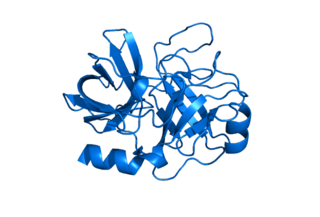
Kallikrein-8 is a protein that in humans is encoded by the KLK8 gene.

Dipeptidyl-peptidase 2 is an enzyme that in humans is encoded by the DPP7 gene.

Dipeptidyl peptidase 8 is an enzyme that in humans is encoded by the DPP8 gene.

Kallikrein-12 is a protein that in humans is encoded by the KLK12 gene.

Inactive dipeptidyl peptidase 10 is a protein that in humans is encoded by the DPP10 gene. Alternate transcriptional splice variants, encoding different isoforms, have been characterized.

Dipeptidyl peptidase 9 is an enzyme that in humans is encoded by the DPP9 gene.

Serine/threonine-protein kinase Sgk2 is an enzyme that in humans is encoded by the SGK2 gene.

Potassium voltage-gated channel, Shal-related subfamily, member 1 (KCND1), also known as Kv4.1, is a human gene.

Potassium voltage-gated channel subfamily A member 6 also known as Kv1.6 is a protein that in humans is encoded by the KCNA6 gene. The protein encoded by this gene is a voltage-gated potassium channel subunit.

Potassium voltage-gated channel subfamily G member 4 is a protein that in humans is encoded by the KCNG4 gene. The protein encoded by this gene is a voltage-gated potassium channel subunit.
























